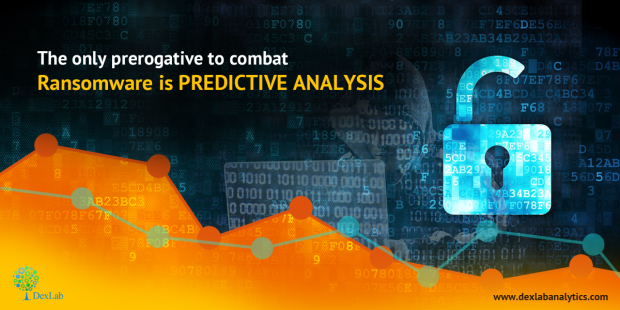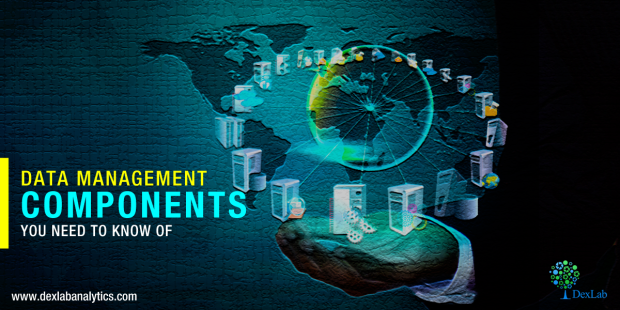Top 6 Myths Associated with Blockchain Technology

Of late, the blockchain technology has emerged as a revolutionary tool spurring acute interest amid the data community. Also known as the ‘distributed ledger’ technology, blockchain provides a way of recording digital transactions in a way that is crafted to be transparent, secure and efficient. The technology is robust and young. In the next few years, it is expected to hit the mainstream and drive commercialization.
No wonder, the blockchain technology is secure and full of positive outcomes yet there exist too much confusion and misunderstanding regarding its essence.
Myth 1: Blockchain is a database full of magical powers
Blockchain is nothing but a simple list of transaction journals – “This list is ‘append only so entries are never deleted, but instead, the file grows indefinitely and must be replicated in every node in the peer-to-peer network”. It doesn’t make room for any sort of physical data storage, like a PDF file or Word document.
Myth 2: Blockchain is the next big change (for good)
Of course, Blockchain is used to perform technical and intricate transactions. It works wonderfully when it comes to mitigating the risk of online fraud, nevertheless, it doesn’t completely eradicate the risks imposed by fraudsters. Thus, it also raises questions on data confidentiality.
Myth 3: Blockchain is free
Although people assume that blockchain is free, the hard fact is that it is neither inexpensive nor highly efficient – YET. It involves several computers to solve myriad mathematical algorithms to formulate a single immutable result, which is eventually known as the Single Version of Truth (SVT).
Myth 4: A single blockchain is in existence
Blockchain is a collective term used for different technologies that are closed or open sourced, available in private or public versions and serve a general-purpose or customized as per needs. However, the common element observed in all of them is that they follow a consensus mechanism and is fleeced up by crypto. Ethereum, Corda, Hyperledger, Bitcoin’s Blockchain and IBM and Microsoft’s Blockchain-as-a-service are all a part of Distributed Ledger Technologies.
Myth 5: Blockchain is the ultimate power technology
Of course, the code is powerful but it’s no magic. Bitcoin and blockchain technologies will definitely lead the future but their authority is limited to mathematics. They won’t replace the job roles of government or lawyers. Cryptocurrency is the fulcrum of blockchain and it’s still far from becoming mainstream.
Myth 6: Blockchain is used only in the financial sector
As a matter of fact, the first application of Blockchain was indeed a bitcoin cryptocurrency, which is a product of the financial sector. Nevertheless, the revolutionary technology has diverse applications across numerous sectors, including finance. Besides finance, blockchain is widely leveraged in healthcare, real estate and FMCG sectors.
At present, Blockchain Technology is evolving at a steadfast rate. Each day, volumes of data records are being created. Such humongous amounts of data need efficient management. For that, the Internet of Things is the key. Dexlab Analytics is a premier Data Science training institute in Gurgaon and we cover a plethora of in-demand skill training courses.
Interested in a career in Data Analyst?
To learn more about Data Analyst with Advanced excel course — Enrol Now.
To learn more about Data Analyst with R Course — Enrol Now.
To learn more about Big Data Course — Enrol Now.
To learn more about Machine Learning Using Python and Spark — Enrol Now.
To learn more about Data Analyst with SAS Course — Enrol Now.
To learn more about Data Analyst with Apache Spark Course — Enrol Now.
To learn more about Data Analyst with Market Risk Analytics and Modelling Course — Enrol Now.
How Big Data is Architecting India’s Biometric Identity System, Aadhaar

The most ambitious project of India, Aadhaar project relies completely on Big Data. From collection of data to storage and utilization of biometric information of the entire population, big data till date has crossed over the billion mark. It is needless to say, a project of such a vast magnitude must be plagued with ample challenges but as its powered by big data, the chances of success is high.
Basically, Aadhaar is a unique 12 digit number assigned by the UIDA, Unique Identification Authority of India to an individual residing in India. The project was launched in the year 2009 under the supreme guidance of former Infosys CEO and co-founder Nandan Nilekani. He was the sole architect of this grand project, which required several added inputs from various other sources.
MapR, a business software company headquartered in California is providing technology support for the most-ambitious Aadhaar project. It is the developer-cum-distributer of “Apache APA +0.00% Hadoop” and for quite some time it is optimizing its well-integrated web-scale enterprise storage and real-time database tech for this project.
The encompassing technology architecture behind Aadhaar is structured on the principles of openness, strong security, linear scalability and vendor neutrality. The system is expected to expand with every new enrollment, which means it’s required to handle millions of transactions through billions of records, each day.
To continue reading, click the link – https://www.dexlabanalytics.com/blog/the-role-of-big-data-in-the-largest-database-of-biometric-information
For big data courses, look no further than DexLab Analytics. It’s one of the best data analyst training institutes in Gurgaon.
The Only Prerogative to Combat Ransomware is Predictive Analysis

Things are not at all going right in the technological sphere. The domain is shrouded under the dark haze of WannaCry Ransomware this weekend. After the relaxing weekend, the Monday morning situation could never have been worse. The figures revealed on Monday evening by the Elliptic, a Bitcoin forensics firm, affirmed with the duty of keeping a close watch, confirmed a digit of $57,282, 23 shelled out to the hackers of Ransomware malware attack, who took over innumerable amount of computers worldwide on Friday and over the weekend.
The recent past has been witnessing the unprecedented malware attack across 150 countries. The current picture describes more than 200000 systems around the world being affected and the loss of tons of data.
Also read: How To Stop Big Data Projects From Failing?
A few years back also, Ransomware was unheard of and today it has emerged as one of the major issues of concern. So, what is the solution now? Several veteran data scientists and the honchos of the technological world have voted for Predictive Analysis as the ultimate solution for destroying Ransomware.
With the conventional cyber defense mechanisms at a backseat, Predictive Analysis defense technology remains the ultimate resort for any organization. The Predictive Analysis is mainly dependent on instituting a pattern of life within the enterprise and saving from disgruntling malware and similar disturbing activities.
Also read: What Sets Apart Data Science from Big Data and Data Analytics
Paul Brady, the CEO of Unitrends, explained the procedure where the backup system uses the tools of machine learning to identify and understand that certain data anomalies indicate the threat of a Ransomware attack.
So the above mentioned description clearly depicts the many advantages of Predictive Analysis. Now, the sad part of the story remains, that the difficulty in management remains the major blockage for the employment of this method. Let’s hope for the best and wait for the day when Predictive Analysis would be the only possible solution. Till then gather information on SAS predictive modeling training in Pune and Gurgaon only at www.dexlabanalytics.com
Data Management Components You Need to Know Of

Do you know why several organizations face problems while implementing Big Data? Still wondering? The reason is lack of poor or non-existent data management strategies.
Proper technology systems need to be adopted. Without procedural flows, data is impossible to be analysed or delivered appropriately. However, before we delve deeper into making a plan to introduce data management strategies into the business, we should pay enough attention to the systems and technologies we are thinking to launch, along with the number of improvements to be made.
Big Data is ruling the tech world. Here are few types of tech that needs to be a part of a successful data management strategy:
Data mining
Common data mining tools are R, SAS and KXEN.
Automated ETL
More consistent, Automated ETL is used to extract, transform and load data.
Enterprise monitoring
They are efficient in offering a protective layer of security and quality assurance by doing a proper problem diagnosis and monitoring critical environments.
BI and Reporting Analytics
Turn data into insights, with BI and Reporting Analytics. It is very vital that data go to the right people and of course in the right manner. If that doesn’t happen, organizations suffer incessantly.
Analytics
Analytics is a huge branch of study, starting from customer acquisition data, tracking details to intriguing user-friendly interfaces and product life cycle.
For More Details, Read The Full Blog Here:
Understanding The Core Components of Data Management
For regular updates on SAS predictive modeling training Pune and Gurgaon, and other developmental interactive SAS certification for predictive modelling courses, reach us at DexLab Analytics.


